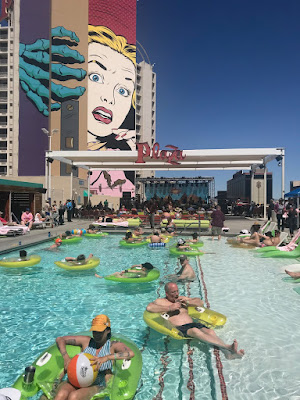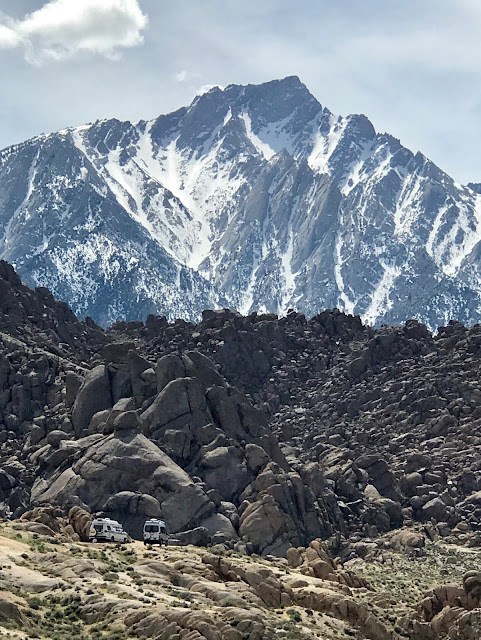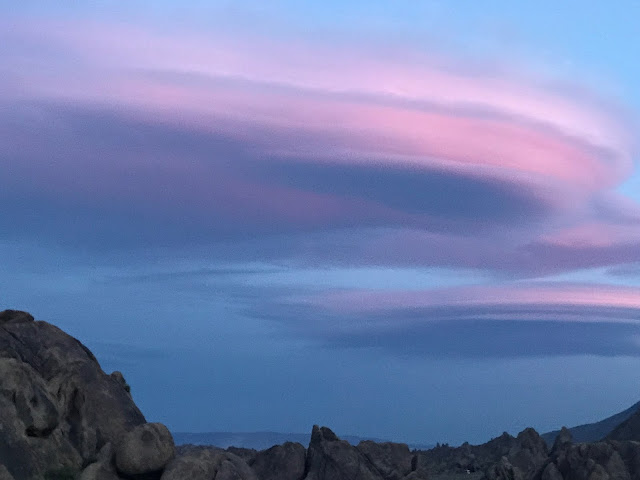The first time Monette alerted me about aging, she was perhaps in her fifties and I, my forties. She sent me a birthday card with the thoughtful message: If you think you're old now, wait five years.
Later her warnings had to do with cringing at the mirror and seeing "new wrinkles every day." She was closing in on 70. I was a mere 61, which you must believe, if you are younger, really does make a huge difference.
Now, at almost 73, "new wrinkles" is my every-day mirror experience. And also divots, shadows, sags, rough spots, or food particles lodged between my crowded teeth. And let's not talk about the neck.
Nora Ephron, a fabulous funny writer already did that in her 2006 book, I Feel Bad About My Neck and Other Thoughts on Being a Woman.
On second thought, let's do talk about it.
From a NYT July 2006 review, an excerpt from Ephron's book:
When my sister, way back in 2006, saw that Nora Ephron had a new book called "I Feel Bad About My Neck," it fed her angst about aging. But instead of rushing to read it, she wrote her reaction to the title, which revealed her own wicked sense of humor, as you shall see. (She has since read the book and recommends it, especially to women over 60 who need a laugh as they experience their own quibbles with Time.)
Later her warnings had to do with cringing at the mirror and seeing "new wrinkles every day." She was closing in on 70. I was a mere 61, which you must believe, if you are younger, really does make a huge difference.
Now, at almost 73, "new wrinkles" is my every-day mirror experience. And also divots, shadows, sags, rough spots, or food particles lodged between my crowded teeth. And let's not talk about the neck.
Nora Ephron, a fabulous funny writer already did that in her 2006 book, I Feel Bad About My Neck and Other Thoughts on Being a Woman.
On second thought, let's do talk about it.
From a NYT July 2006 review, an excerpt from Ephron's book:
“Our faces are lies and our necks are the truth. You have to cut open a redwood tree to see how old it is, but you wouldn’t if it had a neck.”
This is true. I had a friend who was married to a plastic surgeon. He often told her, his hand hiding his mouth because the object of his observation was near by, "There's one," he'd whisper. "A 35-year-old face, a 50-year-old neck."
When my sister, way back in 2006, saw that Nora Ephron had a new book called "I Feel Bad About My Neck," it fed her angst about aging. But instead of rushing to read it, she wrote her reaction to the title, which revealed her own wicked sense of humor, as you shall see. (She has since read the book and recommends it, especially to women over 60 who need a laugh as they experience their own quibbles with Time.)
Nora's Neck
By Monette Johnson
When I first read that Nora Ephron wrote a book called I Feel Bad about My Neck, I knew what she meant, but had to wonder how she picked her neck when there's so much else to feel bad about that's so much worse.
I haven't yet read her book, so maybe she covers some of the other stuff too. But still. I would have thought a professional writer like Nora would have picked something equally bad that at least could have led to a snappier title, something alliterative such as I Feel Bad about My Belly. Or better yet, I Feel Bad about My Bulging Belly or why not My Bulging Belly and My Behemoth Butt.
And I guess her whole point is what's happening as she ages, so bad bellies and butts aren't really pertinent since they happen to the young, too, although I swear my belly was as flat as the proverbial pancake until it started to get old and the older it gets, the badder it makes me feel. My butt is a whole other story.
Maybe Nora picked her neck because necks are usually naked whereas bellies and butts usually aren't, at least not for any woman over 16 or so if she's got an ounce of sense after sagging and bulging starts to set in.
You can always attempt to camouflage bad necks with scarves, and bad butts and bellies with long, loose-fitting garments. No one is fooled by this, of course. But it makes women of a certain age feel as though spending an outrageous amount of cash on a stylish tunic and still more on a fashionable scarf is somehow worth the expense.
Or maybe Nora focused on her neck because some of the other stuff hasn't happened to her yet. Maybe her belly is still flat, her butt nicely rounded, and her boobs firm and perky. Maybe she looks in the mirror, sees the skin sagging around the prominent neck tendons and thinks this is as bad as it's going to get.
I've got news for Nora. It gets way worse.
On the other hand, Nora is rich. She must be after all those successful books and screenplays. Maybe she's had it all fixed. That must be it!
Yes, she's had her belly and butt liposuctioned and her boobs lifted along with parts of her face. Or maybe she's a Jane Fonda follower and keeps it all properly in place working out 10 hours a day.
If her neck truly is all she's got to feel bad about, she's a woman to be envied. I know women who feel bad about varicose veins, thick, ropy blue things that wind and coil around legs that are way more unattractive than scrawny necks.
Some women even feel bad about brown spots on their hands; this is probably because they're referred to as liver spots. Calling them large freckles instead might have prevented at least a bit of angst.
Some women feel bad about thinning and/or graying hair. Of course, there's an easy fix here with wigs and hair dyes but again, no one is really fooled.
Others feel bad about disappearing libidos, especially now that studies have revealed hormone therapy could be deadly.
Then there are women who feel bad about knees, hips, and shoulders that need replacement. Or hands and feet that no longer work with dexterity and without pain
And some women feel bad just because they feel bad, dammit. So there you have it, Nora. Buck up, buy a spiffy new scarf and try not to think about what lies ahead.


























































